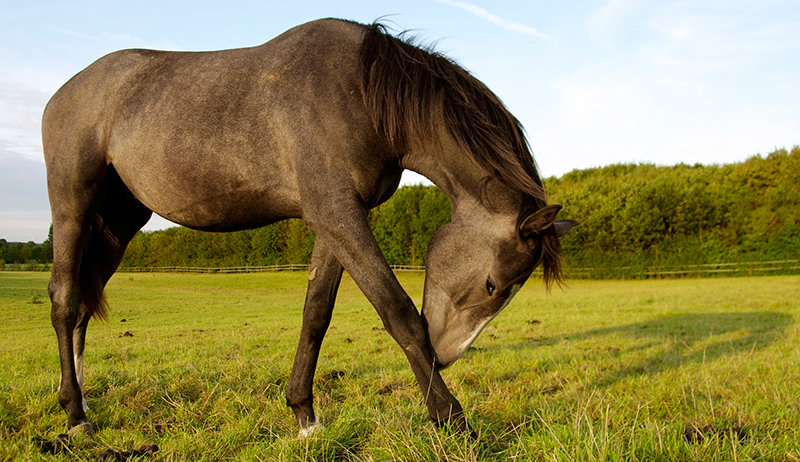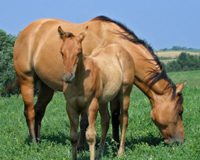
iStock/Thinkstock

Q: What’s the best way to control bots and remove bot eggs from your horse?
A: I’m going to approach this question from two different angles. First, if you live in an area where bot flies are a problem, try to keep your horse free of the small, sticky, yellow eggs that the adult fly lays on their haircoat. Most often seen on the front legs, chest, shoulders, armpit, and mane, some species of Gasterophilus lay their eggs right on the horse’s face, so be sure and check there too. And because eggs can be licked by the horse and hatch in their mouths fairly soon after they’re deposited, egg removal is a task you’ll want to perform every day or every other day.
There are a couple of options for removing bot eggs from your horse’s coat, and for all of them, make sure your equipment and grooming area (such as tack stall or wash stall) are cleaned up afterwards or all you’ve done is just move the eggs around instead of destroy them. Some people prefer to scrape off the eggs with a specially made blunt, curved bot “knife,” while others prefer a grooming block. There are a couple of choices here depending on your preference, such as a regular grooming block that is mostly intended to remove dirt, hair, and dander, but which also works well to remove bot eggs. There’s also a pumice stone/lava rock that’s bit more abrasive. Sandpaper works well for some people, while others choose the simple cloth and warm water method.
In addition to the physical removal of bot eggs, it’s also important to administer a dewormer that is effective against this particular parasite at the appropriate times of year. Only ivermectin and moxidectin have label claims against bots, with ivermectin being a bit better at killing all stages of the larvae than moxidectin. The best time to give one of these dewormers is after the first frost in climates that experience a winter, which would be late fall or early winter. Experts recommend also deworming for bots again in the spring with one of these two compounds, just to catch any stray bot larvae that may have been missed with the first treatment.
Fortunately, bots are one internal parasite that is not believed to cause a lot of damage to the mouth and GI tract. Since they are easily prevented and treated though, there’s no reason for your horse to have to endure any discomfort due to their presence.





